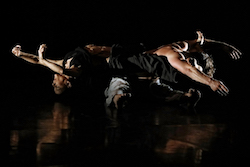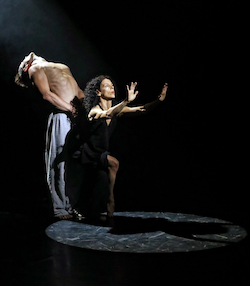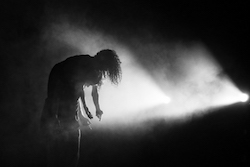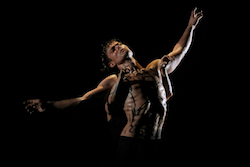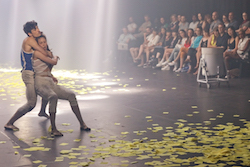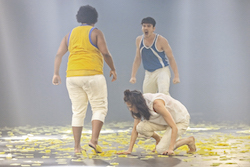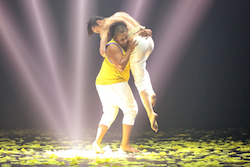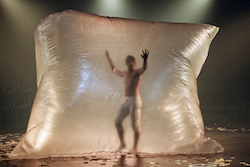Wil King and Guy Simon in Strangers in Between
STRANGERS IN BETWEEN
THE REGINALD , THE SEYMOUR CENTRE
FEBRUARY 2018
Part of the Mardi Gras festival this play by Tommy Murphy as
beautifully directed by Daniel Lammin showcases an extraordinary cast .
Tommy Murphy's gay coming-of-age play was written over
ten years ago , and before perhaps his best known work Holding the Man.His most recent play is Mark Colvin’s Kidney which premiered
last year. Strangers in Between has
recently been revived in London and although much has changed since the play's
premiere, it is still extremely relevant reminding us of the major challenges and harassment that can be
experienced by LBGTI youth . It is a delightful mix of wisdom and naivety
not often seen in portrayals of gay life.
The minimalist set design by Abbie-Lea Hough
consists of plain walls , a glittering nightclub like silver fringed curtain
and a bathtub. Lighting design by Rob Sowinski is most atmospheric and
effective.
Strangers in Between follows Shane (Wil King), a
naïve young man who has fled to Sydney from a rural town , away from his
family’s rejection and the threat of homophobic violence , and ended up in
King’s Cross. Shane discovers a new totally different world where he is free
and feels safe and accepted .
In Kings Cross, Shane, naïve , edgy and impractical
, encounters two men – Peter and Will-
who will mentor and look after him ( how to use the laundromat , where
to buy coathangers and what sort of wine chardonnay is for example , let alone
how to use the till and organise change at the bottleshop where he has a job) .
It is a splendid ‘three- hander’ tremendously acted ,which is vibrant very
poignant and moving and with some witty dialogue. The characters have great
depth and there are unexpected twists.
Shane encounters the handsome , but emotionally
rather icy and aloof young Will, ( Guy
Simon) , a work colleague of his and
from whom Shane catches a sexually transmitted disease.
We also meet the older Peter, ( Simon Burke) who is
kind , generous , accomplished , sardonically witty and he avuncularly decides
to look after Shane. We see Peter’s compassion and yet fragile vulnerability. Burke
is splendid in the role and just when one begins to question his motives and
actions Burke uncovers a sensitivity created by a past of hidden regret and
ache in a beautifully nuanced , elegant performance .
The tone of the second half is darker as Shane has
to confront his harsh , rigid , homophobic , vicious brother Ben , insistently
menacing , their shared fractured past and his medical condition. The simple
addition of a red checked shirt delineates the difference between Will and Ben
and Guy Simon is terrific as both .
Will King as Shane shines – he is endearing ,
puppyishly energetic and enthusiastic , combines apprehension and invigorating wide
eyed innocence , boyishly charming ,
sixteen claiming to be nineteen and one
minute asking about refrigerating honey and the next most awkward ,
embarrassing , intimate ,questions about sex all with a desire for life and
experience that is so typical of adolescence. The scenes between Shane and
Peter are very moving .
Wild funny and tender this is a magnificent
production that captures the search for belonging and the story remains
relevant and sparkling.
Running time – 2 hours including interval
Strangers In Between by Tommy Murphy is at the
Reginald at the Seymour Centre
14February - 2 March 2018
Director: Daniel Lammin
Producer: Cameron Lukey
Co-Producer: Andy Johnston
Cast Simon Burke Wil King and Guy Simon
Producer: Cameron Lukey
Co-Producer: Andy Johnston
Cast Simon Burke Wil King and Guy Simon







